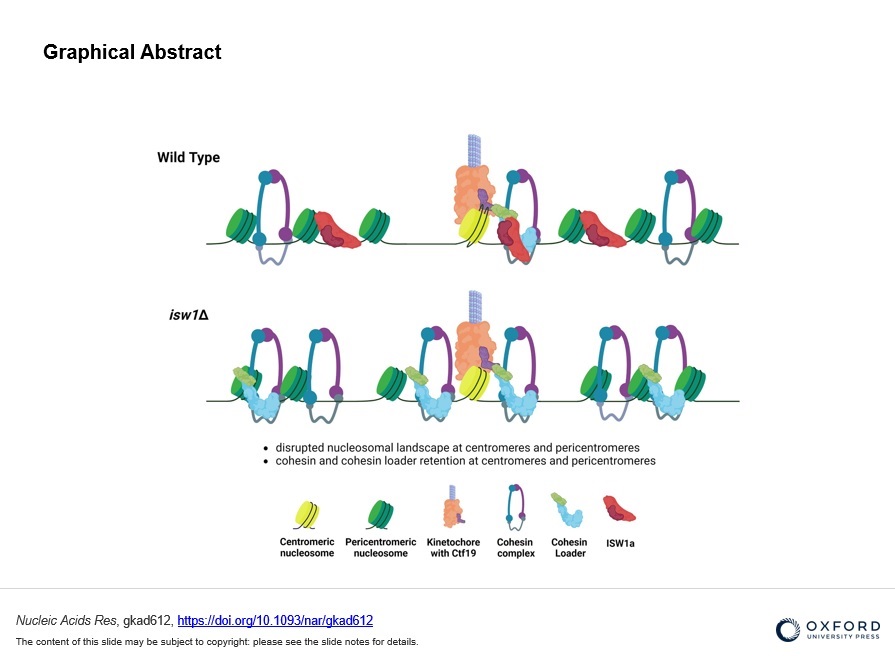
Our researchers’ article on the pages of Nucleic Acids Research.
DNA is a basic information pertaining to the cell structure and function included in all living organisms. During the replication period, DNA material is subjected to duplication, thanks to which each chromosome consists of two identical sister chromatids. Equivalent distribution of genetic material is crucial, as the changes in the numbers of chromosomes may lead to developmental disorders or cause tumours to form. Cohesin is a protein complex in a shape of a ring, which maintains sister chromatids in a close proximity from the DNA replication phase up to the third phase of cell division – anaphase. It prevents the premature separation of the sister chromatids and enables an equal transfer of genetic material between the mother cell and daughter cell. Unfortunately, it is still partially unknown in what way the process of binding cohesin with DNA is regulated and how this process affects the presence of nucleosomes.
On the pages of Nucleic Acids Research (NAR) was published recently an article titled “ISW1a modulates cohesin distribution in centromeric and pericentromeric regions”, devoted to binding mechanisms of cohesin with chromatin in the model organism of baker’s yeast, which authors are dr Ireneusz Litwin, dr Katarzyna Markowska and dr Karol Kramarz from the Incubators of Research Excellence – DNA Repair and Replication Research Center and Małgorzata Nowicka, dr Paulina Tomaszewska, prof. Ewa Maciaszczyk-Dziubińska, as well as prof. Robert Wysocki from Department of Genetics and Cell Physiology, University of Wrocław.
The obtained results suggest, that binding of cohesins with DNA is a complex process, depending on a complicated web of interactions between numerous proteins. One of the protein, which was identified as a new interactome of cohesin, proved to be the chromatin remodeling, protein ISW1. Our research has shown, that the ISW1 organises centromeric nucleosomes and nucleosomes covering pericentric regions in such a way, that the cohesins may effectively move from charging points on the centromere to pericentromere. When ISW1 is absent in the cell, cohesins accumulate on the centromere, as well as in the pericentromeric regions. The results published in NAR additionally suggest, that the excessive accumulation of cohesin on the centromere and delayed translocation to pericentromere may slow down the process of genetic material distribution, which in turn may result in abnormal division of chromosomes between mother and daughter cell.
More detailed information to find at: https://academic.oup.com/nar/advance-article/doi/10.1093/nar/gkad612/7230095.
Translated by Marta Kłyszejko (student of English Studies at the University of Wrocław) as part of the translation practice.



